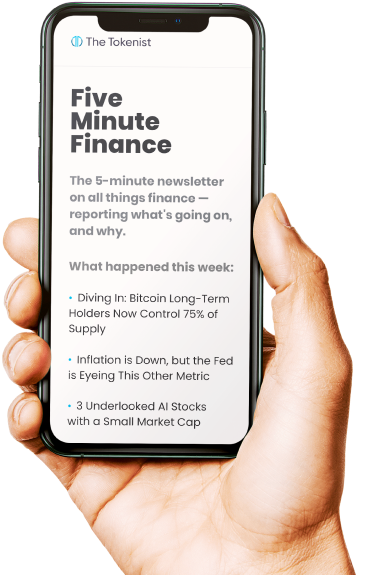
Intel Inside: How the Trump Admin’s Turnaround Ups the Chipmaker’s Value
Over the past month, Intel CEO Lip-Bu Tan has slipped into a story arc uncannily reminiscent of Federal Reserve Chair Jerome Powell’s, after President Trump cast the nation’s top central banker as a personal foil. It began on August 7, when Trump blasted Tan on Truth Social as “highly CONFLICTED and must resign, immediately. There is no other solution to this problem.”
This was a jab at Tan’s history of venture investments in Chinese firms. Yet, in true Trump fashion, the attack soon flipped. Just four days later, after a White House meeting with Tan, Bessent, and Lutnick, Trump reversed course, hailing the Intel chief: “His success and rise is an amazing story.” After Trump’s reversal, Intel stock surged nearly 21% to $26, well above its 52-week average of $21.67. In this light, let’s re-examine how investors should think about Intel’s prospects.
Intel’s Position in the US Hegemony Tech Stack
Running a modern global empire requires more than just military and economic pressure, as recently demonstrated in the EU-US trade agreement that left the EU humiliated. In the digital age, a full tech stack has to be secured.
The US has already accomplished this with its Big Tech cluster. Case in point, 74% of publicly traded EU companies rely on US-based tech services, according to a recent Proton survey. However, on the global stage, China has the potential to flip this around.
Not only with its own Huawei-SMIC ecosystem, but by re-integrating its neighboring island Taiwan. The island is a de-facto US military protectorate, holding the world’s top chip producer – TSMC – supplying both Nvidia and AMD as foundry-less companies.
To counter the TSMC vulnerability, Intel announced its IDM 2.0 strategy in early 2021, which included the launch of Intel Foundry Services (IFS). However, the goal to become the world’s 2nd largest chip producer, therefore fortifying the US hegemony tech stack, encountered multiple hurdles.
Namely, the capital expenditures necessary to make the transition drained Intel’s coffers at a time of heightened TSMC and AMD competition. It also didn’t help that Raptor Lake issues eroded Intel’s credibility. As of Q2 2025, Intel’s retained earnings (accumulated deficit) accounted for $45.58 billion, following $2.9 billion net loss in the quarter.
Join our Telegram group and never miss a breaking digital asset story.
What is TSMC to Intel?
In early August, President Trump made an odd comment linking a $300 billion chip investment from TSMC (NYSE: TSM) to Arizona foundries. In reality, the Taiwanese company committed only $165 billion. At the time of the coverage, we framed this as a leverage play on TSMC to continue supporting the US tech stack in exchange for goodies.
Those goodies came just a day later, as TSMC was effectively exempted from the new semiconductor tariff regime.
“Because Taiwan’s main exporter is TSMC, which has factories in the United States, TSMC is exempt.”
Liu Chin-ching, heading Taiwan’s National Development Council
During April’s Q1 earnings call, TSMC CEO C.C. Wei denied rumors that the company is forming a joint venture with Intel. Nonetheless, Intel is partially reliant on TSMC for its own chips, namely Panther Lake (18A) and subsequent Nova Lake, which is a hybrid of Intel’s 18A and TSMC’s N2 node process.
Successful Intel 18A rollout will be critical for the company to boost investor confidence, although its current silicon yield appears to be fairly low. In the meantime, TSMC fills the gap as a de-facto US domestic chip manufacturer.
To further Intel’s revitalization, the company is likely to attract direct capital inflows. The recent $2 billion injection from SoftBank may be only the beginning—signaling a broader push of strategic capital into U.S.-aligned infrastructure, from Intel’s foundries to Ellison’s SoftBank-backed Stargate AI project.
The Bottom Line
TSMC is ultimately a means to an end for the US hegemony. With tariff regimes, the Trump admin triggered a shift from globalization to interventionist industrial policy. Within this framework, Intel is positioning itself as a domestic champion capable of producing advanced chips on American soil.
Owing to the organizational and technical complexity to make that happen, Intel is predictably struggling. However, an outright merger between TSMC and Intel would likely induce even greater complexities. The end result is TSMC’s background collaboration with Intel while the Taiwanese company enjoys a de-facto domestic status.
The fact that President Trump shifted from “highly CONFLICTED” to “success and rise is an amazing story” regarding Intel CEO is likely a result of a talk given to him by his associates. And that talk is about the big picture of Intel emerging as adjacent to TSMC.
In the worst case for the US hegemon, China-US conflict over Taiwan, Intel may even emerge on the top. In the meantime, the average INTC price target remains at $22, under the current price range of $24 per share.
Disclaimer: The author does not hold or have a position in any securities discussed in the article. All stock prices were quoted at the time of writing.




